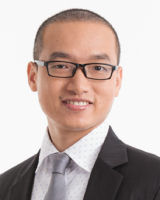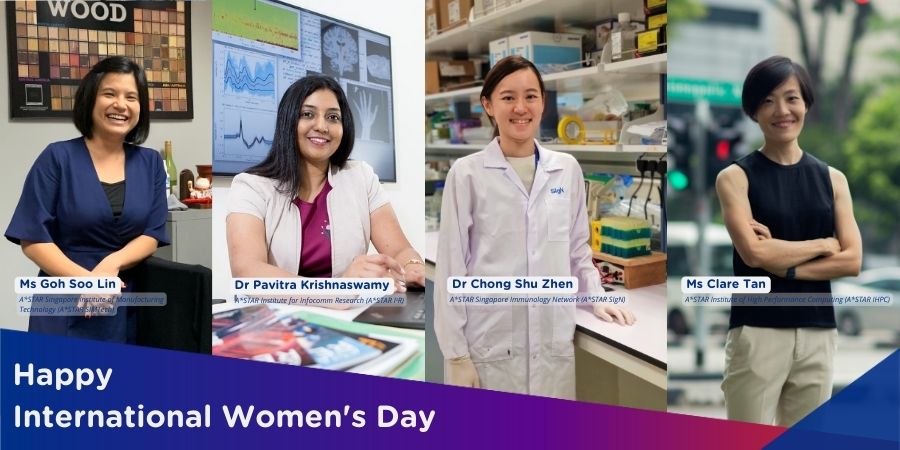Rotated Lorentzian Graph Embedding Model for Asymmetric Proximity
[CFAR Rising Star Lecture Series]
Rotated Lorentzian Graph Embedding Model for Asymmetric Proximity by Dr Feng Shanshan
Graph embedding, which aims to learn low-dimensional node representations to preserve original graph structures, has attracted extensive research interests. However, most existing graph embedding models represent nodes in Euclidean spaces, which cannot effectively preserve complex patterns, e.g., hierarchical structures. While recent hyperbolic embedding models have been proposed to preserve the hierarchical information in negative curvature spaces, the existing hyperbolic models fail to model the asymmetric proximity between nodes. To address this challenge, Dr Feng Shanshan and his team investigate a new asymmetric hyperbolic network representation problem that targets at preserving the hierarchical structures and asymmetric proximity for general directed graphs.
In this talk, Dr Feng will introduce a novel Rotated Lorentzian Embedding (ROLE) model, which yields two main benefits. First, their model could effectively capture both implicit and explicit hierarchical structures that come from the network topology and category information of nodes, respectively. Second, it could model the asymmetric proximity using rotation transformations. Dr Feng will also share empirical results to demonstrate that the proposed approach would consistently outperform various state-of-the-art graph representation models.
Rotated Lorentzian Graph Embedding Model for Asymmetric Proximity by Dr Feng Shanshan
18 Jan 2023 | 3.00pm (Singapore Time)
Graph embedding, which aims to learn low-dimensional node representations to preserve original graph structures, has attracted extensive research interests. However, most existing graph embedding models represent nodes in Euclidean spaces, which cannot effectively preserve complex patterns, e.g., hierarchical structures. While recent hyperbolic embedding models have been proposed to preserve the hierarchical information in negative curvature spaces, the existing hyperbolic models fail to model the asymmetric proximity between nodes. To address this challenge, Dr Feng Shanshan and his team investigate a new asymmetric hyperbolic network representation problem that targets at preserving the hierarchical structures and asymmetric proximity for general directed graphs.
In this talk, Dr Feng will introduce a novel Rotated Lorentzian Embedding (ROLE) model, which yields two main benefits. First, their model could effectively capture both implicit and explicit hierarchical structures that come from the network topology and category information of nodes, respectively. Second, it could model the asymmetric proximity using rotation transformations. Dr Feng will also share empirical results to demonstrate that the proposed approach would consistently outperform various state-of-the-art graph representation models.
SPEAKER

Dr Feng Shanshan
Associate Professor
Harbin Institute of Technology (Shenzhen)
Associate Professor
Harbin Institute of Technology (Shenzhen)
Dr Feng Shanshan is currently an associate professor with the School of Computer Science and Technology, Harbin Institute of Technology (Shenzhen). Prior to that, he was a research scientist at the Inception Institute of Artificial Intelligence (IIAI), Abu Dhabi, United Arab Emirates. He was previously a senior researcher at Tencent company, and a research scientist at A*STAR’s Institute of High Performance Computing (IHPC). He received his PhD degree from the Nanyang Technological University in 2017, and his B.S. degree from the University of Science and Technology of China in 2011. His current research interests include big data analytics, spatio-temporal data mining, artificial intelligence, and financial technologies. He has published more than 30 high-quality research papers, such as TKDE, TOIS, SIGIR, SIGKDD, VLDB, ICDE, AAAI and IJCAI etc.
A*STAR celebrates International Women's Day

From groundbreaking discoveries to cutting-edge research, our researchers are empowering the next generation of female science, technology, engineering and mathematics (STEM) leaders.
Get inspired by our #WomeninSTEM
.png?sfvrsn=d3a97fa3_12)